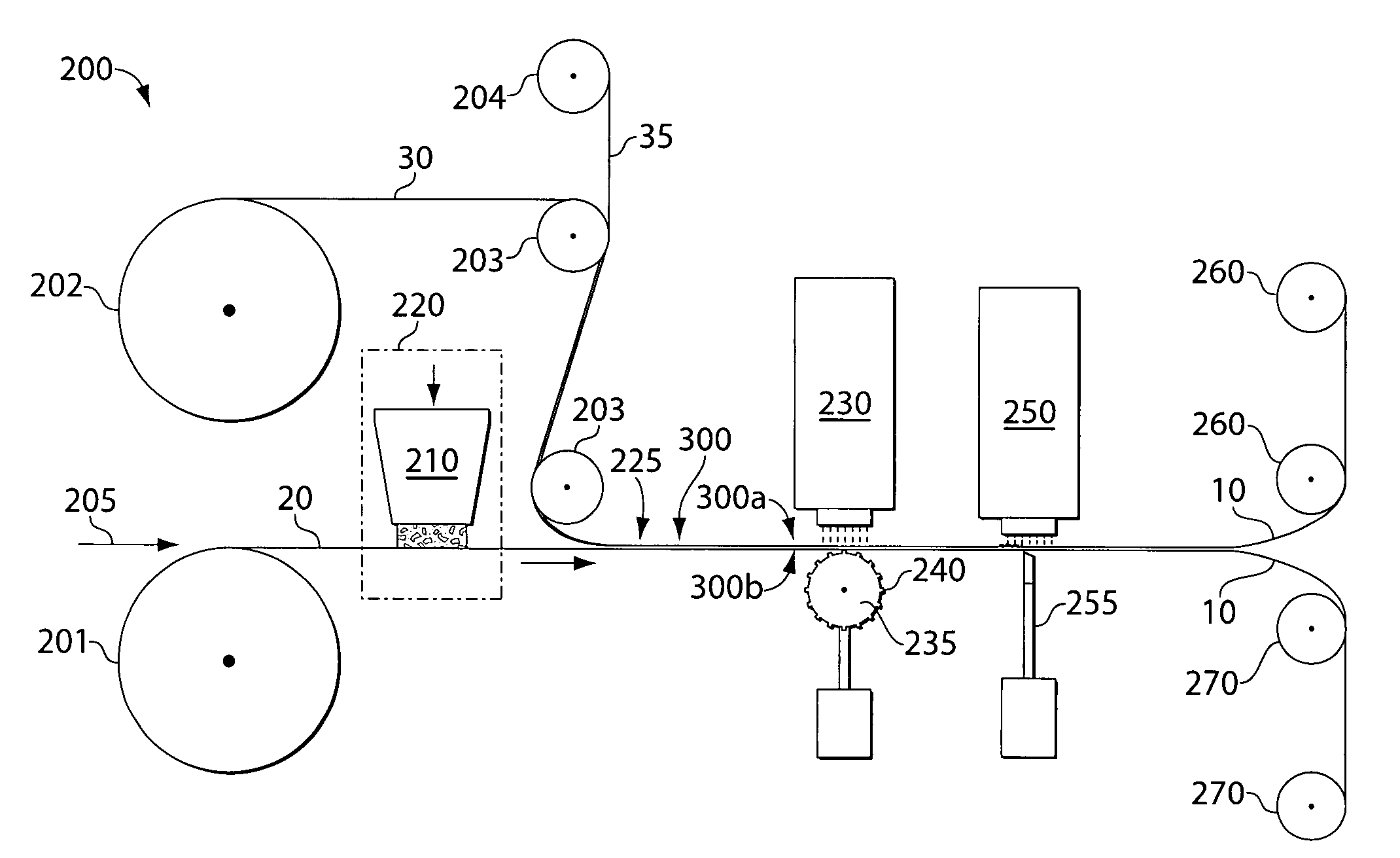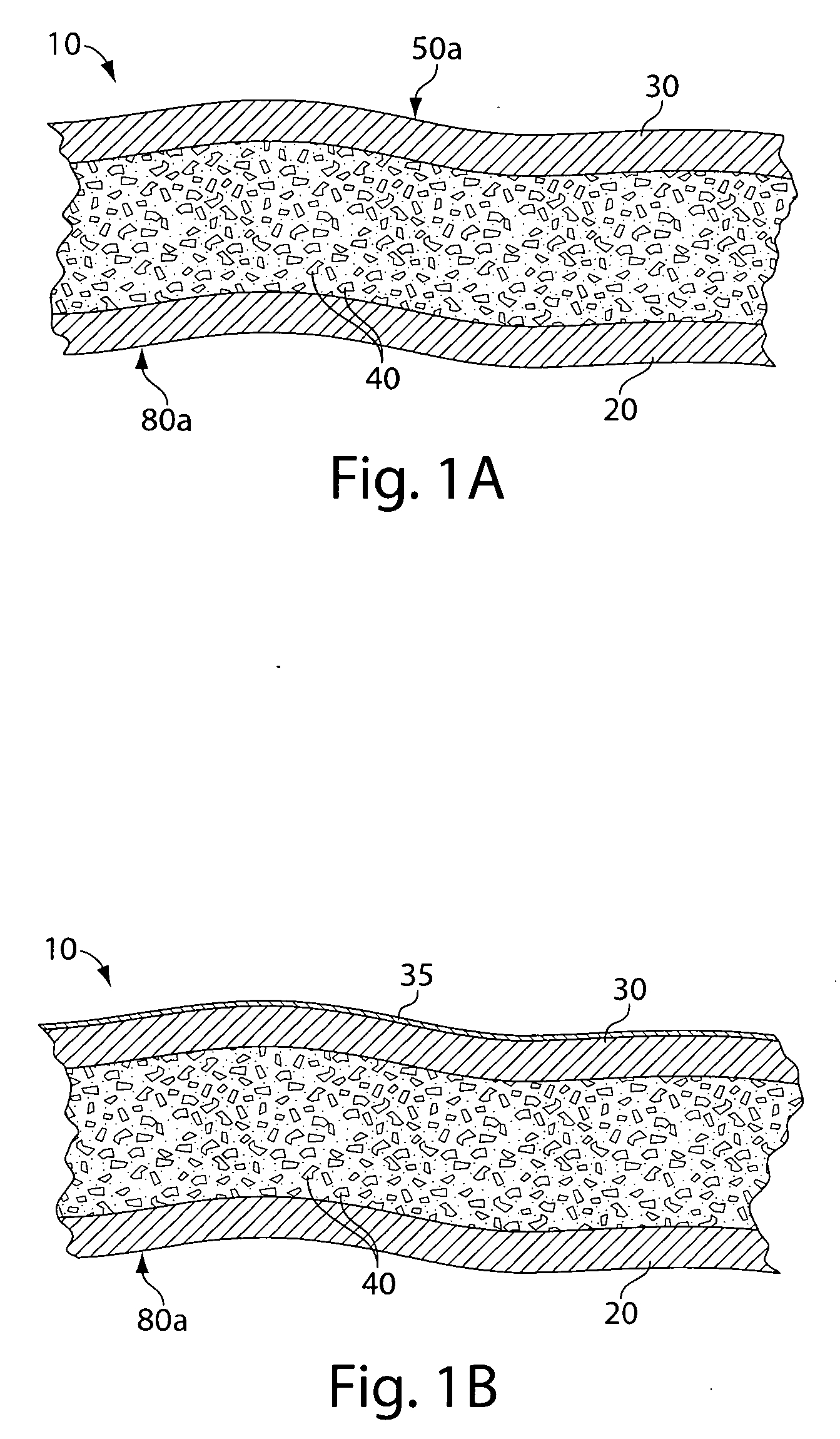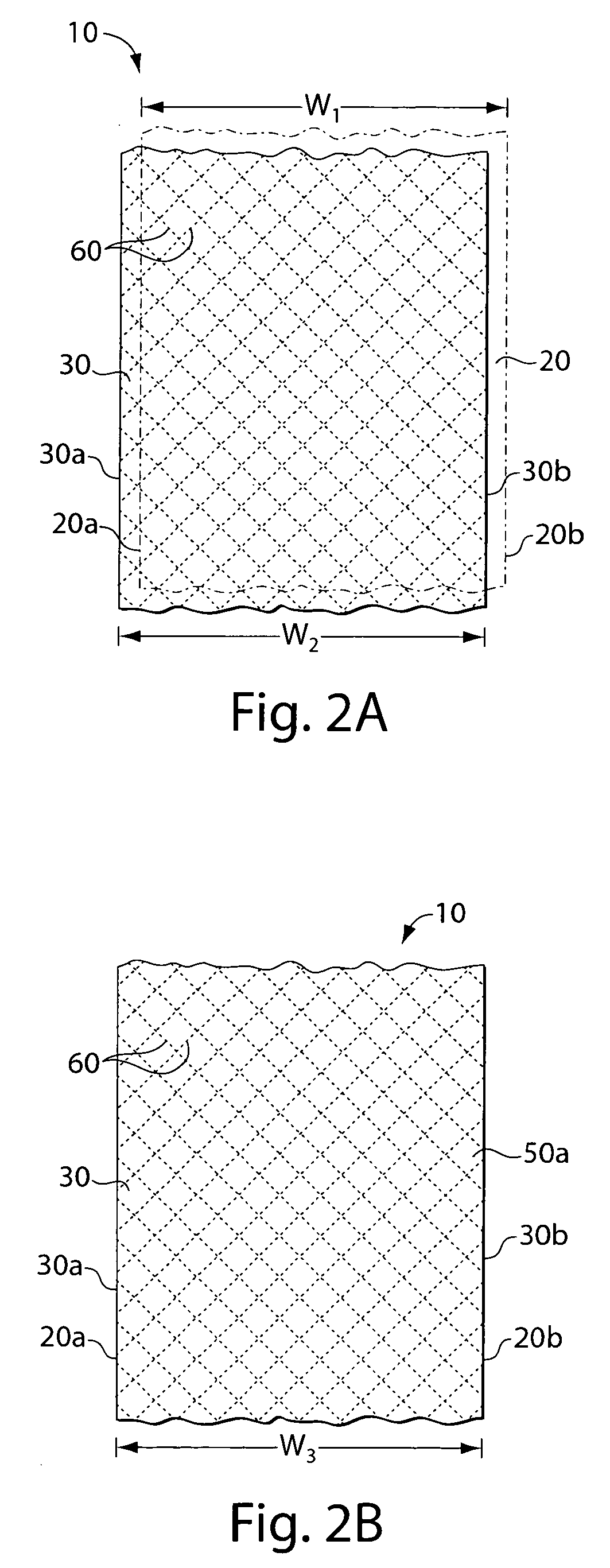Water blocking cable tape and methods for making same
a technology of water blocking cable and water blocking tape, which is applied in the direction of cables, insulated conductors, instruments, etc., can solve the problems of long-term reduction of transmission reliability and outright transmission failure, inability to protect the integrity of the transmission line, and inability to protect the transmission line, etc., to achieve the effect of eliminating the use of adhesives and bonding agents
- Summary
- Abstract
- Description
- Claims
- Application Information
AI Technical Summary
Benefits of technology
Problems solved by technology
Method used
Image
Examples
Embodiment Construction
[0036] The invention provides a water blocking tape for use with a cable, such as a data communications cable, a telecommunications cable, or a power cable. The water blocking tape according to the invention generally includes a first layer of nonwoven material disposed on a second layer of nonwoven material with one or more swellable water blocking compounds disposed between the first and the second layers. The layers are bonded in a pattern using ultrasonic bonding techniques. The layers are substantially simultaneously impinged with ultrasonic waves and printed with a pattern to bond or fuse the layers along the lines and demarcations of the pattern. The bonding pattern helps to contain or to compartmentalize the water blocking components between the layers. When the tape is applied to a cable or integrated with one or more cable components, the tape provides water blocking properties. Other embodiments are within the scope of the invention.
[0037] Referring to FIGS. 1a-1b, in a ...
PUM
 Login to View More
Login to View More Abstract
Description
Claims
Application Information
 Login to View More
Login to View More - R&D
- Intellectual Property
- Life Sciences
- Materials
- Tech Scout
- Unparalleled Data Quality
- Higher Quality Content
- 60% Fewer Hallucinations
Browse by: Latest US Patents, China's latest patents, Technical Efficacy Thesaurus, Application Domain, Technology Topic, Popular Technical Reports.
© 2025 PatSnap. All rights reserved.Legal|Privacy policy|Modern Slavery Act Transparency Statement|Sitemap|About US| Contact US: help@patsnap.com



